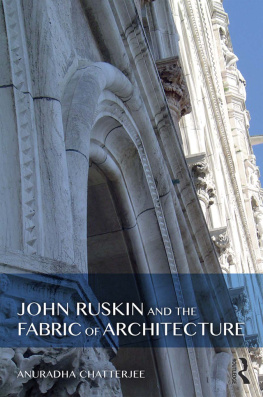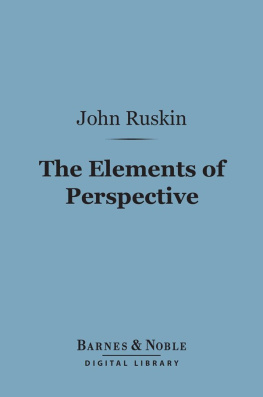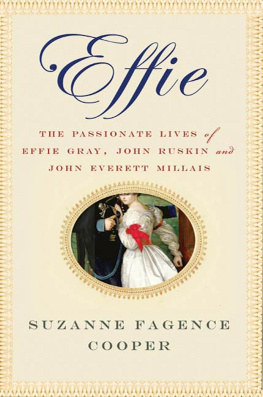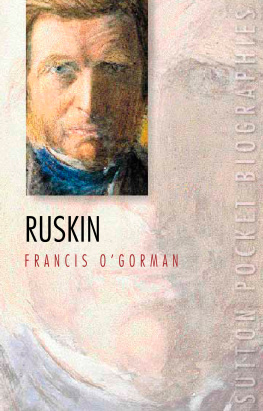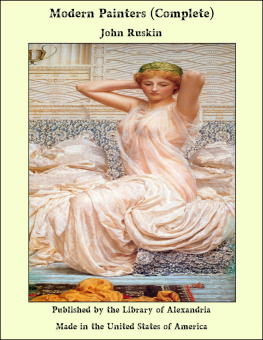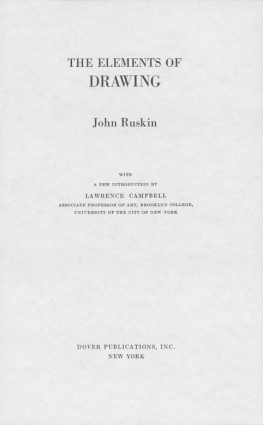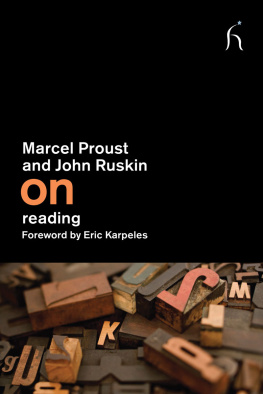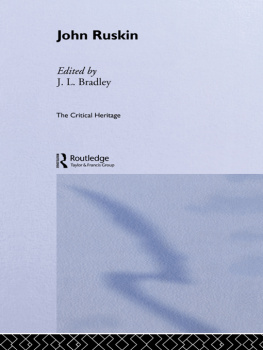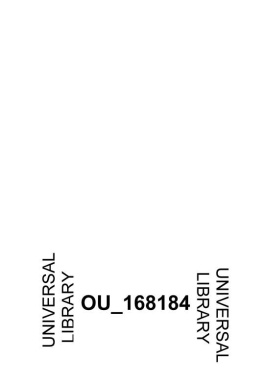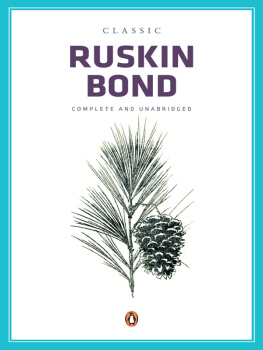John Ruskin and the Fabric of Architecture
Through the theoretical lenses of dress studies, gender, science, and visual studies, this volume analyses the impact John Ruskin has had on architecture throughout the nineteenth and twentieth centuries. It explores Ruskins different ideologies, such as the adorned wall veil, which were instrumental in bringing focus to structures that were previously unconsidered.
John Ruskin and the Fabric of Architecture examines the ways in which Ruskin perceives the evolution of architecture through the idea that architecture is surface. The creative act in architecture, analogous to the divine act of creation, was viewed as a form of dressing. By adding highly aesthetic features to designs, taking inspiration from the veil of womens clothing, Ruskin believed that buildings could be transformed into meaningful architecture. This volume discusses the importance of Ruskins surface theory and the myth of feminine architecture, and additionally presents a competing theory of textile analogy in architecture based on morality and gender to counter Gottfried Sempers historicist perspective.
This book would be beneficial to students and academics of architectural history and theory, gender studies and visual studies who wish to delve into Ruskins theories and to further understand his capacity for thinking beyond the historical methods. The book will also be of interest to architectural practitioners, particularly Ruskins theory of surface architecture.
Anuradha Chatterjee is an architectural historian and theorist based in Sydney. She completed her MArch and PhD from the University of New South Wales. Anuradha is the author of Built, Unbuilt, and Imagined Sydney (COPAL Publishing, 2015) and Surface and Deep Histories (Cambridge Scholars Publishing, 2014), and the founding editor of online refereed journal The Eighth Lamp: Ruskin Studies Today .
John Ruskin and the Fabric of Architecture
Anuradha Chatterjee
First published 2018
by Routledge
2 Park Square, Milton Park, Abingdon, Oxon OX14 4RN
and by Routledge
711 Third Avenue, New York, NY 10017
Routledge is an imprint of the Taylor & Francis Group, an informa business
2018 Anuradha Chatterjee
The right of Anuradha Chatterjee to be identified as author of this work has been asserted by her in accordance with sections 77 and 78 of the Copyright, Designs and Patents Act 1988.
All rights reserved. No part of this book may be reprinted or reproduced or utilized in any form or by any electronic, mechanical, or other means, now known or hereafter invented, including photocopying and recording, or in any information storage or retrieval system, without permission in writing from the publishers.
Trademark notice : Product or corporate names may be trademarks or registered trademarks, and are used only for identification and explanation without intent to infringe.
British Library Cataloguing-in-Publication Data
A catalogue record for this book is available from the British Library
Library of Congress Cataloging-in-Publication Data
Names: Chatterjee, Anuradha, author.
Title: John Ruskin and the fabric of architecture / Anuradha Chatterjee.
Description: New York : Routledge, 2017. | Includes bibliographical references and index.
Identifiers: LCCN 2017014257| ISBN 9781472449436 (hardback) | ISBN 9781315611365 (ebook)
Subjects: LCSH: ArchitecturePhilosophy. | Ruskin, John, 18191900Influence.
Classification: LCC NA2500. C453 2017 | DDC 720.1dc23
LC record available at https://lccn.loc.gov/2017014257
ISBN: 978-1-4724-4943-6 (hbk)
ISBN: 978-1-315-61136-5 (ebk)
Typeset in Sabon
by Apex CoVantage, LLC
Contents
Guide
A number of colleagues, students, and friends have contributed to this project through their enthusiasm and conversations. I thank Peter Kohane for being a mentor and a friend, and for his persistent faith in Ruskin as an architectural theorist of consequence; Andrew Crompton for arguing the value of Ruskin, Carlyle, and textile and fabric in current architectural design trends; Rachel Dickinson for sharing her knowledge and enthusiasm of Ruskin and textile; Mark Frost for encouraging me to think about Ruskins potentiality for architectural practice; Lars Spuybroek for sharing his parallel work on Ruskin and the veil; Cynthia Gamble for always having faith in my obscure meanderings; Mike Anusas and Cristin Simonetti for inviting me to contribute to their anthology on surface and for urging me think deeper about the architectural positions I take for granted; Liz Oakley-Brown for inviting me to the Surface Studies Network; and Susan Best for sharing her own winning book proposal with me, which gave me the courage and direction to submit my own proposal to the publishers.
I shall forever remain indebted to the Ruskin Foundation and the Ruskin Library, in particular Stephen Wildman, Rebecca Patterson, and Jennifer Shepherd, for having me in residence in 2004, and more recently in 2014. I am particularly appreciative of their generosity of spirit, in suggesting and locating many relevant drawings, sketches, notebooks, and daguerreotypes, and for augmenting my search with their personal insights. I also thank Louise Pullen at Museums Sheffield for helping me navigate the Ruskin cast collection; Victoria Osborne at the Birmingham Museums and Art Gallery for guiding me patiently through the Edward Burne-Jones drawings; and Caroline Palmer at the Western Art Print Room, Ashmolean Museum for facilitating the perusal of the Ruskin Teaching Collection. I am also very thankful to McBride Charles Ryan Architects in Melbourne, Australia for opening up their office to me in 2008, and in particular architect Debbie Ryan, who personally drove me to their then completed buildings. These are valuable engagements, without which the writing and publication of the book would have been impossible.
The book was supported by three grants. The international and local travel to archives and libraries in the UK was supported by the Research Support Grant from the Paul Mellon Centre for Studies in British Art. The costs for image use and licensing have been provided by the Publications Grant (Author) from the Paul Mellon Centre. The Stones of Venice Grant from the Ruskin Foundation, Lancaster University allowed me to travel to Lancaster and stay on campus to undertake archival research. The illustrations have been kindly provided by Museums Sheffield, Ruskin Foundation, Alinari Archives, Bridgeman Images, Ashmolean Museum, Scottish National Gallery, Birmingham Museum and Art Gallery, William Morris Art Gallery, Alamy Stock Photos, and McBride Charles Ryan Architects. Above all, I am very thankful for the continuous support from Routledge, in particular my editors Sad Lee and Grace Harrison for their constant support and professionalism.
- Badia Fiesolana, known to Ruskin as Badia of Fiesole
- Basilica of San Zeno, known to Ruskin as San Zenone of Verona
- Baptistery of St John, Florence, known to Ruskin as Baptistery of Florence
- Church of San Michele in Foro, Lucca, known to Ruskin as Church of San Michele at Lucca
- Church of the Scalzi, known to Ruskin as Santa Maria degli Scalzi

